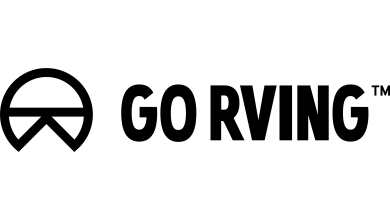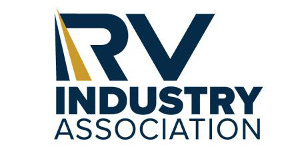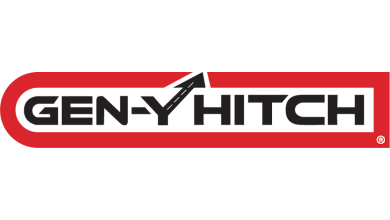ECI’s Focus is on Sustainable Composites, and It’s Winning
When Airxcel acquired Elkhart Composites Inc., the growth potential of this thermoplastic composite company was clear.
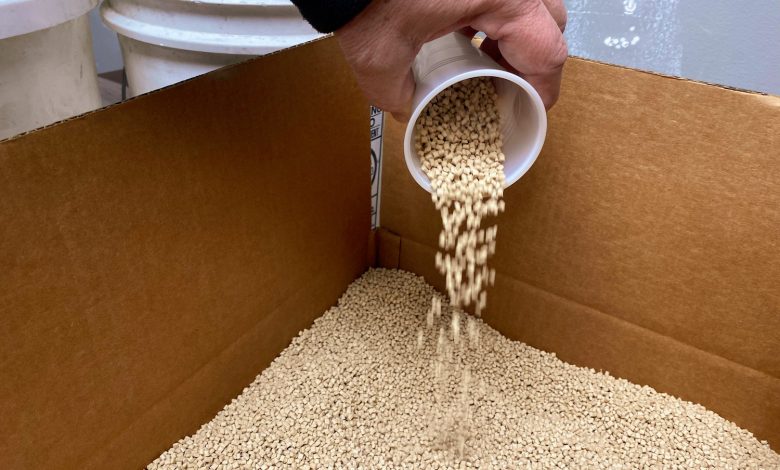
The April issue of RV PRO, available now, features a series of stories on sustainability in the RV industry.
Elkhart Composites Inc. (ECI) General Manager Chris Workman is no stranger to sustainability. With a degree in environmental management, he spent a stint at one point in his life cleaning up hazardous waste.
“I did that for about a year, and I said, God, there has to be a better way to make a living,” Workman says with a laugh, describing the hazmat suit he was required to don.
Somewhat of a newcomer to the RV industry with four years in, Workman first worked in supply management and sustainability for THOR Industries, Airxcel’s, and thus ECI’s, parent company. Now as the general manager of ECI, he is working with what he described as a “startup” brand that was founded with a sustainability mission.
RV PRO spoke with Workman to learn more about ECI’s commitment to the environment as it makes headway in the industry with its Elkboard composite material.
RV PRO: Tell us about the founding of ECI – what was the jumping off point for the business?
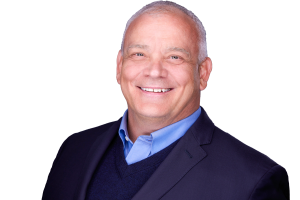
Workman: It was 2019 when the founder (John Petrofsky) established and launched the product that we produce – Elkboard. The individual who founded the company, he was based here in Elkhart, Indiana, and really saw the supply chain disruption and volatility of a product that typically goes under the brand name of Luan. Luan is a thin-gauge plywood primarily sourced out of Asia. It is used literally by the tens of millions of square feet in not only the RV industry, but around a host of industries. It’s a substrate that goes into two primary applications. One is the actual construction of the wall, which is a sandwich of materials. The outer layer is fiberglass reinforced plastic, typically known as FRP. You’ll have a substrate layer bonded to that that then attaches to framing, which is normally aluminum. As you know, the industry doesn’t make a lot of stick-and-tin construction any longer. Then there’s another layer of substrate, and that’s what builds the actual wall structure itself.
Then there’s a separate application where it’s typically referred to as a decor board, but this is where it’s that same substrate and it has a decorative film laminated to it.
When you’re done building the RV, kind of the last step before you start assembling and installing appliances and cabinetry and things, you’re putting that decorative finish on the wall.
So that’s the historic way that Luan, which is still the dominant material in the industry, is used. The founder of the company, he wasn’t in the RV industry, but being based here locally, saw the volatility of the supply of Luan related to quality, availability and price. And then also doing his research into where it’s sourced from; I mean, just think about the millions of acres required to harvest that – those forests.
So, it was really with the understanding of there’s a supply need as well as the sustainability connection to be able to validate a composite-based material that could be a substitute.
Airxcel bought this business Dec. 1, 2021. The founder is still involved in the capacity of a technical consultant.
RV PRO: Tell us more about ECI and its operations.
Workman: Right now, as a startup business, it’s a relatively small team. From an office perspective, there’s roughly half a dozen of us, all based locally. From a manufacturing perspective, one of the things that is true to plastic manufacturing is the best way it runs is (to) dial it in and leave it alone. So, we run four (days a week with) two 12-hour shifts. The majority of our customer base right now is local, so we offer them just-in-time delivery. It’s roughly a 100,000-square-foot facility right here in Central Elkhart.
RV PRO: What do you think appealed to Airxcel about the brand?
Workman: I think the attracting piece is the unlimited potential and the sheer volume we were talking in terms of how substrate materials are used in today’s construction; the growth potential is tremendous. The feedback from our customers is extremely positive in terms of ease of handling, ease of processing. We haven’t talked about this, but outside the RV industry, there’s a tremendous application outside. We quickly learned that this is a great fit in the RV space and there’s tremendous potential elsewhere. So, if you think of any of those environments where people want water resistance, decay and mold resistance, it is fire retardant, it’s formable. Other industries are looking for materials with those properties that can also be shaped. I had an inquirer the other day from someone who makes headliners for tractors.
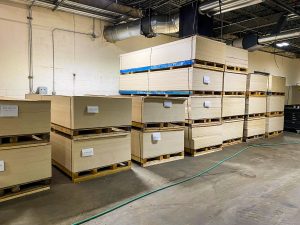
RV PRO: When we spoke in February, you were increasing capacity at your facility. Tell us about the capacity growth – why is it necessary?
Workman: We’re literally at 300% capacity growth. We’re in the process of installing equipment. The first production line that we still use today is what we’re using to supply our current customer base. It has capacity limitations because it really was the scale-up, prototype line. (We need to) take it from the lab environment to the manufacturing environment.
Recognizing the potential for the product – again, if you think literally of the tens of millions of square feet of Luan that’s used in the industry, this capacity expansion that we’re going through would still put us in a position of single-digit market share. So, the volume is astronomical.
When you think about the fact that in a typical RV, you’re probably using anywhere from 10 to 25 sheets of Luan per RV. The requirement in the industry is about a million sheets a week of Luan is what the industry uses. So, from our capacity perspective, when I go through this expansion, I’m in that eight to 10 million square feet per month. While this is an enormous expansion for us, it is still a small percentage of the industry demand.
RV PRO: Tell us about other capacities this expansion will create for ECI that sets it apart?
Workman: There’s also some process capabilities that come with this from a proprietary perspective – we will have the ability to extrude the widest in the industry. If you think about a lumber mill, it’s very similar to a steel mill, and that is they kind of make what they want to make. You don’t have a lot of flexibility in that. You’re very set on a 4-foot width, and then they come in set lengths – 8 feet, 9 feet, sometimes 10 feet. But there’s a lot of restrictions on it because the RV industry, while it’s an enormous user of that Luan plywood, they’re one of the many industries that use it.
We’ll have the ability to go up to 9 feet in width and, really, any length. So, what that gives our customers is the opportunity for things like seamless walls. If you think about some of the weaknesses of current RV construction – and this kind of ties into one of the benefits that our product Elkboard offers – but if you think about a seam where they have to line those sheets of plywood side by side to get the right dimensions – every one of those seams becomes a potential leak path. And it’s those leak paths that ultimately lead to the decay and rotting of the natural wood product. So that ties directly into the life cycle of the RV.
One of the advantages we bring as a composite material is that it’s a thermoplastic – it’s not going to rot over time.
RV PRO: Tell me more about the composite material.
Workman: It’s actually a thermal plastic compound – a reinforced, foamed thermoplastic.
It has a very significant recycle content – that was one of the targets of the founder from the standpoint of environmental friendliness. The fact that it’s a significant concentration of recycled material in that base formula.
Elkboard is roughly 25% lighter than the natural Luan plywood in the same thickness. It provides the strength, it provides ease of bonding because we treat both surfaces to enable them to be easily bonded with poly thin adhesives.
It’s 25% lighter than the wood it’s replacing, and that has a tremendous impact on the fuel efficiency of today’s RVs.
RV PRO: Tell us about the appeal of the sustainability message that came with ECI.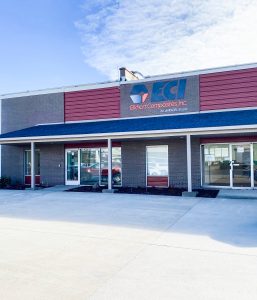
Workman: At Airxcel, we think of it as sustainability is the roof of a house that governs everything. We try to present it to our team members and to our marketplaces as it’s really a focus on continuous improvement. Sustainability is nothing more than Lean, right? It’s driving continuous improvement, whether that be in better retention of my employees or stronger engagement with my community, or a reduced greenhouse gas footprint. It’s driving continuous improvement. That’s the philosophy we bring to the table. Then environmental, social and governance (standards) are the pillars of the house. And that foundation is our team members and our community. So that’s the way we look at it.
As being a relative newcomer to the RV industry, I’ve never experienced an industry that is so sincerely and naturally connected to the communities where we live and work. I really think that’s a strength of the RV industry. Everyone’s trying to be a good citizen. It’s as much an education process as anything else.
It also ties into other Airxcel products, and it comes down to durability, reduced labor and cost of installation, greater efficiency during operation. And if you are familiar at all with Lean, there’s seven or eight types of waste in Lean. So, if you’re putting CO2 out the chimney and it’s not translating to customer value, isn’t that waste also? (Thinking of it that way) makes it less emotional and more of a business conversation if you put it into that context of driving continuous improvement.

